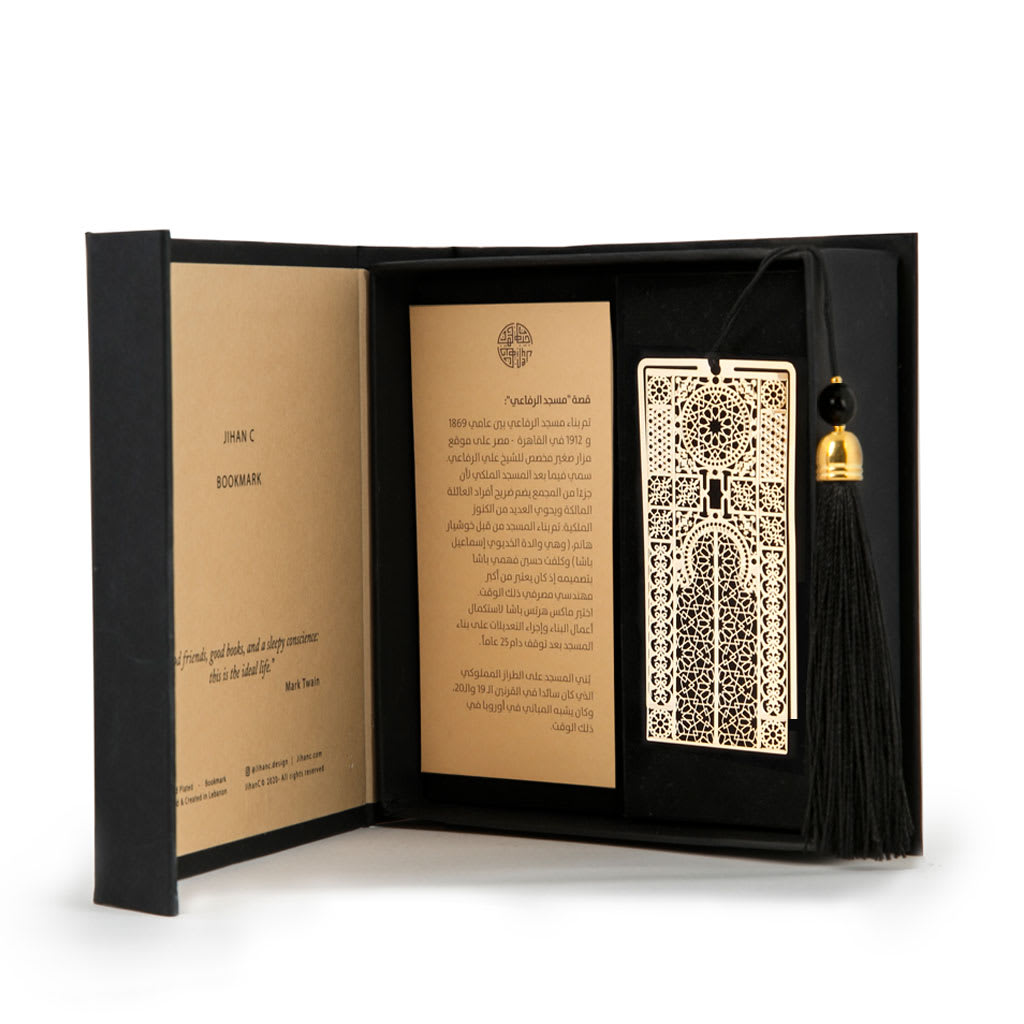Jihan C
Al Rifai Mosque Box Bookmark Set
24k gold plated bookmark with black bead box Set
13 x 13.5 x 4 cm
Copyright The Artist
AED 395.24
Jihan C Bookmark to preserve the history and the heritage of the Mediterranean and Middle Eastern doors and windows. Doors have always held a great meaning. As we are known...
Jihan C Bookmark to preserve the history and the heritage of the Mediterranean and Middle Eastern doors and windows.
Doors have always held a great meaning. As we are known for our hospitality in the Middle East, it comes as no surprise to see how beautifully welcoming our doors are.
The Rifai Mosque was built between 1869 and 1912 in Cairo - Egypt on the site of a small shrine dedicated to Sheikh Ali Rifai. It was later called the Royal Mosque becasuse part of the complex houses the mausoleum of the royal family and contains many royal treasures. The mosque was built by Khushiar Hanim, the mother of Khedive Ismail Pasha and commissioned Egypt's supreme architect Hussein Fahmi Pasha with his design. Max Hertz Pasha was chosen to complete the construction work and make adjustements to the mosque's construction after a 25-year interruption. The mosque was built in the Mamluk style that was prevalent in the nineteenth and twentieth centuries, and it looked like European buildings at the time.
Doors have always held a great meaning. As we are known for our hospitality in the Middle East, it comes as no surprise to see how beautifully welcoming our doors are.
The Rifai Mosque was built between 1869 and 1912 in Cairo - Egypt on the site of a small shrine dedicated to Sheikh Ali Rifai. It was later called the Royal Mosque becasuse part of the complex houses the mausoleum of the royal family and contains many royal treasures. The mosque was built by Khushiar Hanim, the mother of Khedive Ismail Pasha and commissioned Egypt's supreme architect Hussein Fahmi Pasha with his design. Max Hertz Pasha was chosen to complete the construction work and make adjustements to the mosque's construction after a 25-year interruption. The mosque was built in the Mamluk style that was prevalent in the nineteenth and twentieth centuries, and it looked like European buildings at the time.

